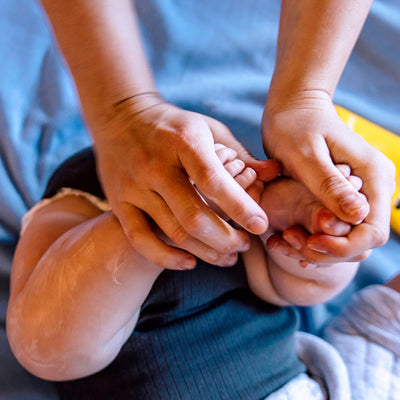When you’re expecting a baby, there are a lot of (incredibly cute but equally mystifying) things to buy. (You don’t know how to choose a sleep suit. You’ve never bought one before! Do you need sleeves? Legs? What’s a TOG!) So to help take the trickiness out of shopping for one big thing (ahem, a cot), we asked our mates at nursery furniture store Ubabub for their very clever, very expert advice...

How long will a baby sleep in their cot? (Months? Years? Until they’re 25?)
It’s typically 18 months to four years, but that depends on the baby. Now, that seems like a really long time! Which is why it’s smart to invest in a cot that’s designed to become a junior bed. (Like this one!) When your baby outgrows their cot, you can pull off the side and transform it into a toddler bed. This provides a ‘big kid’ bed feel but with the comfort and familiarity of their cot. The perfect transition!
What things should be on the safety checklist? (Very important!)
Firstly, ensure your cot meets Australian Safety Standards. If it doesn’t, don’t buy it. And always make sure you follow instructions carefully when assembling and using a cot. This is not a flat pack project you want to freestyle.
You should also position your cot away from any potential hazards – be aware of what things are placed within your baby’s reach (like cushions, pillows and other toys). It’s also recommended that you don’t place anything inside the cot. Not only does that pose a safety risk for newborns, it can also act as climbing aid for an older child.
When you bring your new baby home, adjust the cot to ‘infant’ (the upper position) to save your back! But lower the cot to the lowest position just before your baby starts sitting up and becoming more active. You want to ensure they can’t make an escape!
Lastly, don’t set and forget. Regularly inspect your cot hardware to ensure that nuts and bolts are nice and tight.
What about the mattress? What size/firmness/magic powers should we look for?
A tight fit is really important here. No more than a 20mm gap between the side of the cot and the mattress. (Super snug!) Really, there should be just enough space to lift it out when you change the sheets. Also, you want the cot mattress to be firm – this is especially important for babies between 0-12 months for safety reasons.
Do newborns really need a separate bassinet?
Bassinets are lovely, but they’re not a must-have. They’re handy for keeping your new baby close to you at night for the first 6-8 weeks, and they make the multiple ‘crying alarm clocks’ a little easier to manage. (We have always introduced our brood to their nursery cot for day sleeps, so they get used to sleeping in that space. At 6-8 weeks we move them into their own cot at night to begin encouraging a good sleep routine.) It’s worth noting, bassinets are not subject to Australian Safety Standards or rigorously tested in the same way cots are.
Where’s the best spot to place a cot in the nursery?
Make it easily accessible. You’ll be visiting the side of that cot many, many, many times throughout your baby's first few years. You want to make it easy to get to – day and night. Also make sure it’s positioned so you can easily scoop your bub from the cot. (And definitely not next to anything that your standing bub can use to climb out!) You want to ensure good airflow, but no draft from windows or vents. And not directly under the light!
Okay, got the cot covered! What other furniture pieces make up the nursery puzzle?
Your dedicated baby space should also include a change table or changer/dresser and a comfortable feeding or nursing chair. Also, storage for books and toys. If you need a bit of inspiration, we created a whole other blog post for that. Of course, there are lots of other not-so-indispensable items that can help create your ideal nursery space, like cushions, throws, artwork, a soft rug or a mobile.





Comments